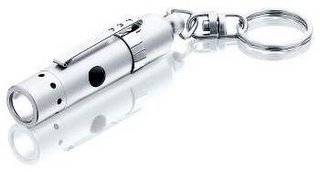Buying Used Clothing
A lot of frugal folks won't think twice about buying used clothing, from garage sales to thrift stores, but there are some who wouldn't dream of wearing 'somebody else's old clothes'.
There are two reasons people don't want to buy used. One is pride, often known as conceit, as in 'I'm too good to wear used clothing!' These people often have an awesome array of credit cards, and as often, not much real money.
The other is squeamishness. 'Eww... wear something that once belonged to someone I don't even know?? What if they had some awful disease...' These people also take their own sheets and towels when they travel, not wanting to use those from the motel that someone else has used before. They never rent skates, either.
The best reason for buying used clothing is often our budgets, but that isn't the only reason. Most of us are not in such bad shape that we can't afford to buy something new now and then. It just doesn't make sense to - not when you can buy three or four somethings 'newish' with the same money and have a better choice!
It's not at all like shopping at a retail store, with it's racks of same style clothing in limited colors and often in limited sizes. At a second hand store, there's not much telling what you can find! People who are unusual sizes often go to big cities to shop or shop from specialty (read 'expensive') catalogs, then sell or give away their old clothing. People with lots of money (or those who just pretend to have lots of money) often buy clothing from several sources and discard 'old' clothing on a regular basis. You can be the benefit of that.
Don't go with a specific style and color in mind, but do go with a list of what you need. Look ahead, too, and be alert to good buys on things you'll need in the future - children's next-size clothing or seasonal furnishings, perhaps maternity clothing or baby items.
Write down clothing and shoe sizes for everyone in your family as well as color and style preferences. Be specific as to what they need. It's not frugal to buy a third white shirt for your little boy, especially if he only wears one a couple of times a year.
You may not find exactly what you're looking for the first time you go to a thrift store or hit the garage sales, but you will eventually. To get the most out of second hand shopping, you need to go often, but you don't buy anything at all if you don't see what you're looking for. You won't save any money if you buy a sackful of junk and things you don't need every time you go, but you won't save either, if you miss that perfect dress or baby outfit because you weren't there.
If you go used clothing shopping at a garage sale especially, wear snugly fitting clothing so you can slip a shirt on to check the sizes or wrap a skirt around your waist to see if it fits.
Zero in on the garage sales most likely to have what you want. A garage sale in a retirement community is highly unlikely to have children's clothing or toys and a community filled with scooters and basketball hoops very likely won't be selling Grandma's handkerchiefs with tatted edgings.
Pay attention to details, whether you shop at garage sales or in a second hand store. Zippers, buttons, tears, ripped seams and pockets and stains may not stop you from buying the item, but the seller should adjust the price for these problems. Many of them can be fixed easily, but be aware of them before you buy and decide whether you want to fix them or not.
Keep an eye out for the occasional sale at a thrift store. That's the time to find material for that quilt you want to make, or the rag rug, or to make other clothing from. It's the time to stock up on undershirts for cold weather (they don't have to be plain white!) and anything else you might need.
Most garage sales are held near the end of the week and/or over the weekend, but it's best to shop the thrift stores during the week. Weekend crowds in the local Salvation Army or Goodwill store can be pretty heavy and make it hard to look through everything.
Consider the time you spend shopping this way to be an investment. One or two trips, or one or two stores or garage sales, won't necessarily have the things you're looking for, but the merchandise changes constantly. Every other week is a good schedule for thrift store shopping and a tight fist is the best policy.
Be sure of the quality of the item and your need for it and you'll win, every time.
Most, if not indeed all of my clothes, with the exception of my uniform, socks and underwear, are bought at Charity Shops, Goodwill Stores, Car Boot Sales, Garage Sales, and the like. $85 boots for $8, a $110 Australian Outback collection jacket for $15, and $65 Bush hat for $2 and so on…
I shall be talking about "thrift shopping", incl. "roadside shopping" in future post on this publication.
© M. V. Smith, March 2006





